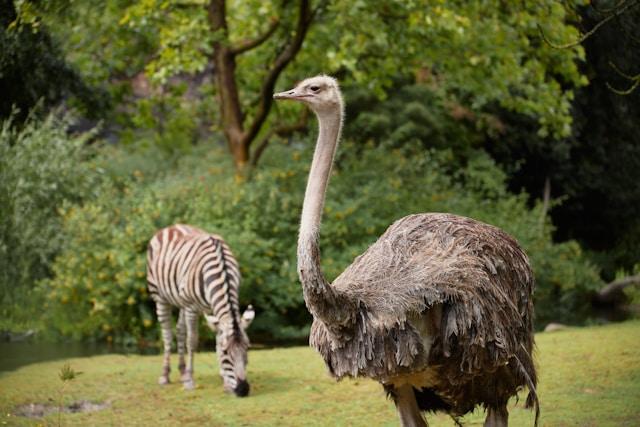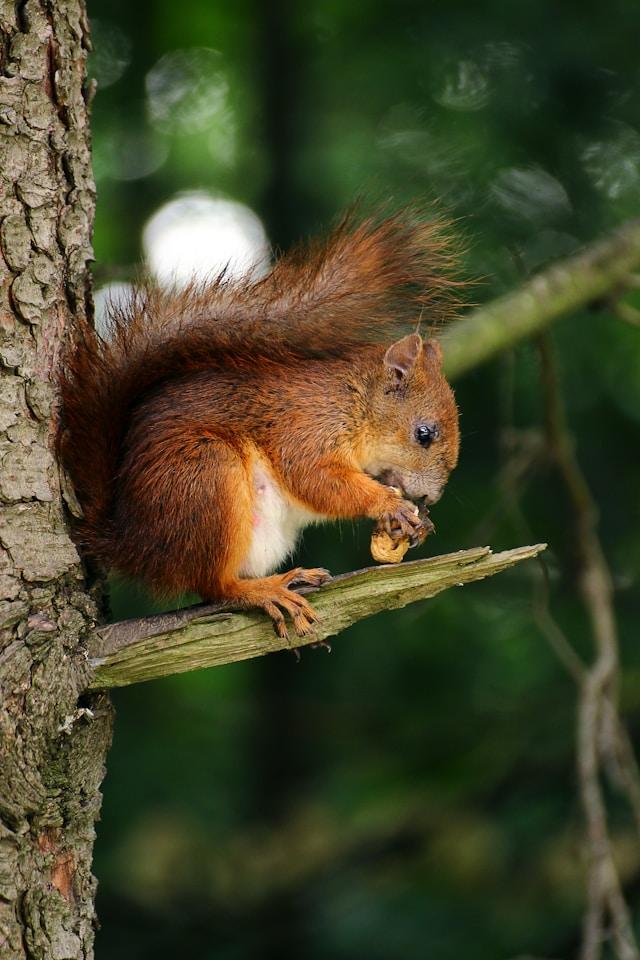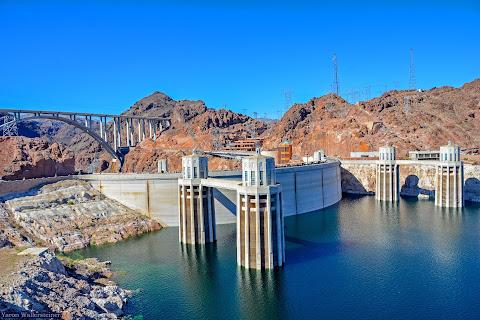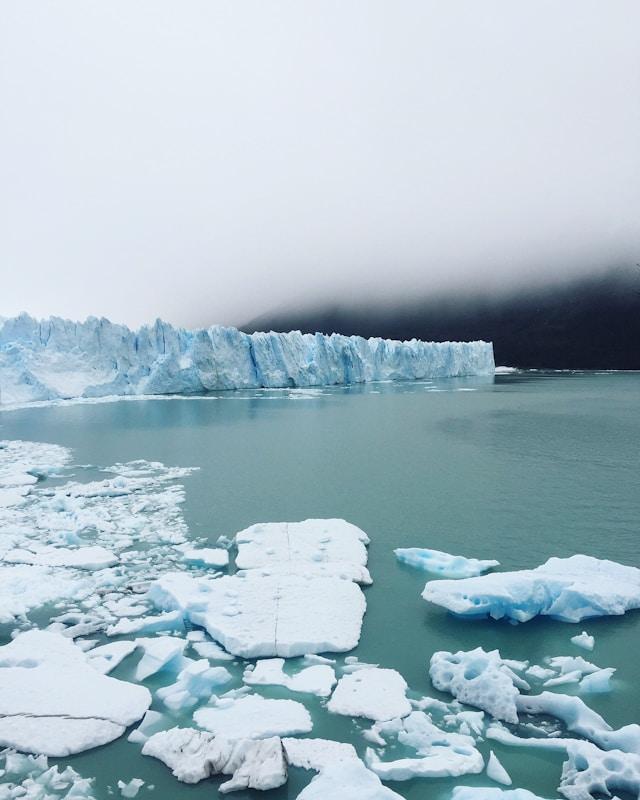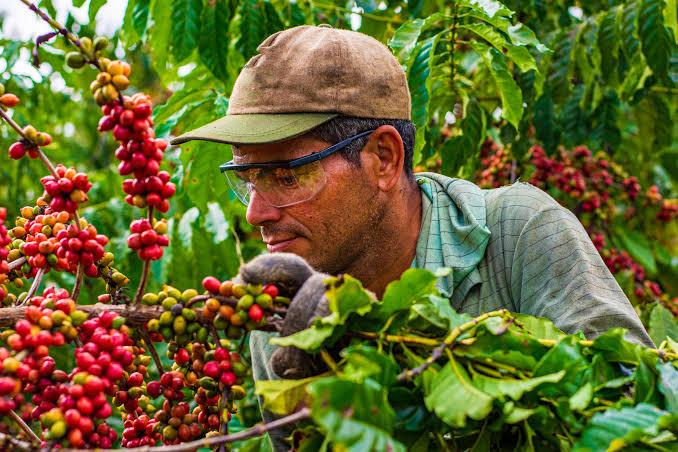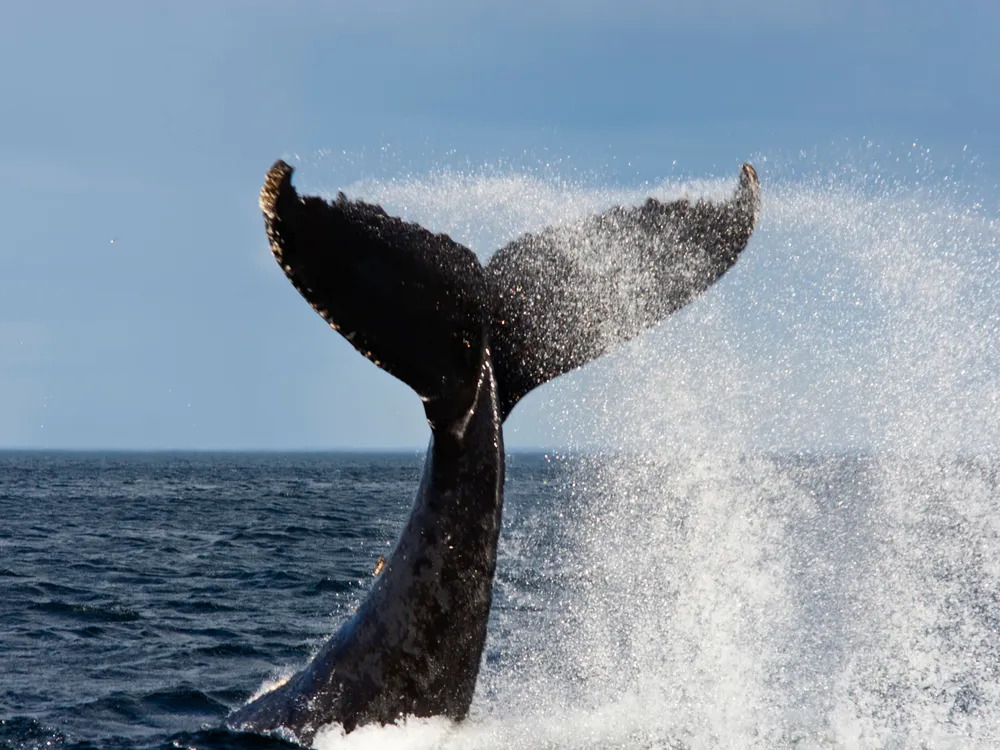Ayema-ABU Collaboration in Uplifting Standards of Education and Earning Income Online
- مجموعة عامة
- 74 المنشورات
- 13 الصور
- 0 الفيديوهات
- التعليم
التحديثات الأخيرة
- WINDOW TAX
In England, William III once introduced the Window Tax, taxing houses based on the number of windows they had. That's why some houses have found the solution to brick the windows.
This tax was first imposed in England in 1696. It was intended to be a progressive tax in that houses with a smaller number of windows, initially, ten were subject to a 2 shilling house tax but exempt from the window tax. Houses with more than ten windows were liable for additional taxes which increased in line with the number of windows. The poorest, who were more likely to live in houses with fewer windows, were therefore in theory, taxed less.
This principle generally worked when applied to the rural poor, but failed to alleviate the tax burden on the urban poor. In towns and cities, it was unusual for the working classes to live in individual homes. They would usually live in large tenement buildings which, however, had been subdivided, were considered to be one dwelling house under the terms of the tax, and therefore subject to heavy window tax assessments.
Although deeply unpopular, the tax survived until the mid-nineteenth century. The negative effects of the lack of adequate light and ventilation were becoming so well documented that a popular campaign against the tax began to gain strength. A motion to repeal the tax failed by three votes in April 1850. A national campaign against the tax followed throughout 1850 and 1851, and it is against this background that Sunderland's petition should be seen. The tax was repealed in 1851.
Source: Ultimate Facts
🖼https://www.sash-windows.co.uk/daylight-robbery-the-taxing-problem-of-too-many-windows/
By *Muhammad Dangiwa*
0 التعليقات 1 المشاركات 43 مشاهدة 0 معاينةالرجاء تسجيل الدخول , للأعجاب والمشاركة والتعليق على هذا! - Paraguay
The Paraguay River serves as a natural border between the countries: 328 km separate Paraguay and Brazil, 390 km separate Paraguay and Argentina, and 57 km separate Brazil and Bolivia 🏞
The majestic river connects and separates these states.
Source:Telegram@Amazing World and Travel
https://t.me/amazingworldtravel/577
By *Muhammad Dangiwa*
0 التعليقات 1 المشاركات 54 مشاهدة 28 0 معاينة - QUBA MOSQUE
Quba Mosque is the oldest mosque in Madinah; it was built in 622, after the shows up Islam religion.
Quba Mosque to the south of Madinah is the second largest and prestigious mosque in the city after the Prophet’s Mosque but claims the first place owing to its importance in Islamic history having been built in the first year of the Islamic calendar.
Its first stones were positioned by Muhammad as soon as he arrived on his emigration from the city of Mecca to Medina, and the mosque was completed by his companions. Muhammad spent 14 days in this mosque praying qasr while waiting for Ali to arrive in Medina after the latter stayed behind in Mecca to carry out a couple of tasks entrusted to him by the Prophet. Also going along with traditional saying, this mosque is said to be where the first Friday prayer was held, led by the Prophet Muhammad.
The prestigious and unique characteristics of Quba Mosque compared to other mosques are cited in this Hadith narrated by the Prophet: “Whoever makes ablutions in this house and offers one prayer therein, will be rewarded the equivalent of one Umrah.”
In the past centuries, Muslims have accorded Quba Mosque much attention. It was renovated by a number of caliphs of the period. The third Caliph Uthman ibn Affan made the first renovations. Caliph Omar bin Abdul Aziz built the mosque’s first minaret. It was renovated again by Abu Yali Al-Husaini who constructed a prayer niche known as the “Mihrab.”
Source: Ultimate Facts
https://unsplash.com/photos/white-and-brown-concrete-building-0V5hSv0dWco?utm_content=creditShareLink&utm_medium=referral&utm_source=unsplash
By *Muhammad Dangiwa*0 التعليقات 1 المشاركات 82 مشاهدة 0 معاينة1
- Golden Gate Bridge
The Golden Gate uses the largest bridge cables ever made, long enough to encircle the world more than three times at the equator.
The Golden Gate Bridge's builders introduced many innovations, but perhaps the most impressive was the precise and efficient technique they used to construct the massive cables.
The bridge's designers carefully calculated the graceful dip of the suspension cables between the two towers to carry the needed weight. The cables had to be flexible enough to bend up to 27 feet laterally, in the Gate's formidable winds, and strong enough to support the structure of the bridge. The planned cables would be so long and strong that they would need to be fabricated in place.
The well-known engineering company of John Roebling and Sons oversaw the cable construction. Roebling had built many of the world's longest bridges -- including the Brooklyn Bridge, 52 years earlier. The firm had devised the most efficient strength-to-rigidity ratio for cables. It had also developed a technique of spinning cables on-site. The Roebling crew's work on the Golden Gate Bridge continued a tradition of innovation.
Cable spinning began in October 1935. To create the cables, Roebling developed a method called parallel wire construction. The innovative technique enabled a cable of any length and thickness to be formed by binding together thin wires. It promised to give engineers the freedom to build a bridge of infinite length.
Hundreds of wires, each roughly the diameter of a pencil, were bound together into strands. Hydraulic jacks then bundled and compressed 61 strands to make a cable. Each of the two main cables is just over three feet in diameter, 7,659 feet long and contains 27,572 parallel wires. The Golden Gate uses the largest bridge cables ever made -- long enough to encircle the world more than three times at the equator.
Source: Ultimate Facts
https://unsplash.com/photos/a-view-of-the-golden-gate-bridge-from-the-top-of-a-hill-81Rl3Wv5K6o?utm_content=creditShareLink&utm_medium=referral&utm_source=unsplash
By *Muhammad Dangiwa*
0 التعليقات 1 المشاركات 83 مشاهدة 0 معاينة1
- Zebra and Ostrich
Zebra have poor eyesight, and ostriches have poor hearing. These two have formed a symbiotic relationship through communicating and warning each other of danger.
The best partners aren’t the ones that do what you do. They’re the ones that complement you. The ones that share your problems and see the dangers. And the ones that give you a fresh angle. Why is it that you always see ostriches and zebras stood together in the wild?
It’s because the zebra has crystal clear hearing and a great sense of smell. The ostrich likewise has a brilliant vision. By working together they both become stronger and more successful. Nature’s very own Confederation. Both the ostrich and the zebra strive for the same goal. We at Confederation Studio immerse ourselves in the culture of our clients to find and adopt that same goal for ourselves.
That’s how we see it, we love working with the disruptors who don’t follow traditional ways of working. As the client, you know more about your mission and competitive landscape. We as the agency know all about how to take you to market and engage with your customers. But we recognize that we will never know the minute details of your business as well as you do.
Source: Ultimate Facts
https://unsplash.com/photos/a-zebra-and-an-ostrich-in-a-grassy-area-LSI7hL-nLtU?utm_content=creditShareLink&utm_medium=referral&utm_source=unsplash
By *Muhammad Dangiwa*
0 التعليقات 1 المشاركات 71 مشاهدة 0 معاينة - *ROLLS-ROYCE*
%75 of the cars that Rolls-Royce has ever produced are still on the road today.
One of Rolls-Royce's stories is that three-quarters of the company's cars are still on the road.
The key to success in the luxury market explains Mr. Muller-Otvos is that customers want to be able to tell their friends, family, and business associates some good stories about what they have bought. That is no problem for a brand as steeped in history as Rolls-Royce. One of its stories is that three-quarters of the company's cars are still on the road: "It is a smart investment," he says. McLaren, a successful British maker of sports cars, is drawing on its heritage as a Formula 1 racing team. Tesla's Model S glories is an advanced car made by a Silicon Valley start-up created by a tech billionaire.
Source: Ultimate Facts
https://unsplash.com/photos/gold-and-black-car-hood-ornament-lTZP3mmELj0
By *Muhammad Dangiwa*
0 التعليقات 1 المشاركات 78 مشاهدة 0 معاينة - *RUSSIA'S FOREST*
Russia has the world's largest area of forests.
The Russian forestry industry is a set of Russian industries related to wood harvesting and processing. As one of the oldest sectors in the country's economy, Russia's timber industry continues to bring in about $20 billion per year. Russia has more than a fifth of the world's forests, making it the largest forest country in the world. According to data for 2015, the total forest area has exceeded 885 million hectares, representing 45% of the total area of the country. The stock of wood in the area was 82 billion cubic meters.
A significant proportion of revenue from the industry is generated by the export of raw materials from sawing logs. For a long time, Russia was the main supplier of raw wood materials in Europe. However, according to a 2012 study by the Food and Agriculture Organization of the United Nations and the Government of the Russian Federation, the potential of Russian forests is underutilized, and Russia's share of the global trade in forest products is less than 4%.
As part of Russia's total industrial production, Russia's timber industry sectors are in seventh place in terms of production and fifth place in terms of national exports. The main product of Russia's forest industry is timber, whose share of the total volume of exported timber is approximately 75 - 80%. The logging industry is considered to be the basic direction of the whole forest complex. By the end of the 1980s, the USSR ranked second in the world in the export of wood, second only to the United States. As a result of numerous economic changes throughout the past decade, Russia has moved between 6th and 7th place worldwide in this index.
Source: Ultimate Facts
https://unsplash.com/photos/a-view-of-a-mountain-through-the-trees-2flwVxktGPs?utm_content=creditShareLink&utm_medium=referral&utm_source=unsplash
By *Muhammad Dangiwa*
0 التعليقات 1 المشاركات 71 مشاهدة 0 معاينة1
- PARENTS' SLEEP
Parents of new babies miss out on 44 days of sleep in the first year of their child's life.
Research says new parents lose about 44 days of sleep in the first year of their newborn's life. In fact, new parents often get about 5.1 hours of sleep per night. But that number may be even lower when the child is first born.
It's not exactly surprising news that new parents don't get a lot of sleep. According to the Daily Mail, research says new parents lose about 44 days of sleep in the first year of their newborn's life. In fact, new parents often get about 5.1 hours of sleep per night.
But that number may be even lower when the child is firstborn. BabyCenter blogger Sara McGinnis had her sister-in-law, who had just given birth to a baby girl, Alison, use Fitbit's sleep tracker app to monitor "how things change after baby arrives."
The Fitbit tracker, which measured her sister-in-law's sleep patterns for several nights the week of Alison's birth, showed that the new mother wasn't anywhere close to even getting a total of eight hours of sleep per day. McGinnis wrote it was just "an average of four hours and four minutes a day, with no one period of sleep lasting so much as three hours."
Source: Ultimate Facts
@https://unsplash.com/photos/person-holding-babys-index-finger-5zp0jym2w9M0 التعليقات 1 المشاركات 245 مشاهدة 0 معاينة1
- Squirrels
Squirrels can climb trees faster than they can run on the ground.
Squirrels communicate with each other through various vocalizations and scent marking. They also use their tails as a signaling device, twitching them when uneasy to alert other squirrels of potential danger.
There are over 265 species of squirrel worldwide. The smallest is the African pygmy squirrel which is tiny at around 10 cm long, whereas the largest, the Indian giant squirrel, is a massive three feet long.
When a squirrel is scared and in danger, it will first remain motionless. If it is on the ground, it will run to a nearby tree and climb to safety, and if it is already in a tree, it will circle the trunk and press up against the bark tightly with its body.
Squirrels are very trusting animals and are of the few wild animal species that will eat out of a person's hand.
In colder regions such as the UK, squirrels plan to survive the challenging winter months. They store nuts and seeds at various locations and return to them throughout the winter to maintain their energy levels when food is scarce.
Squirrels tend to run in erratic paths, intended to deceive potential predators as to their chosen direction so that they may escape.
Squirrels are extremely intelligent creatures. They are known to put on elaborate bogus food burying displays to deceive onlookers. The fake burials trick potential thieves, such as other squirrels or birds, into thinking that they have stored their food stock there. Any observers planning to take the stash will then focus on the bogus burial site, allowing the squirrel to bury the real stash elsewhere safely.
Tree-dwelling squirrels like the grey squirrel build dreys (similar to bird's nests) made of wigs high in trees. They are about the size of a football and are lined with grass, bark, moss, and feathers for added comfort and insulation.
Squirrels communicate with each other through various vocalizations and scent marking. They also use their tails as a signaling device, twitching them when uneasy to alert other squirrels of potential danger.
There are 44 species of 'flying squirrel.' Rather than flying, these species glide using a membrane that stretches from their wrists to their ankles. It allows squirrels to glide naturally as humans do with a parachute. The squirrel is a Native American symbol of preparation, trust, and thriftiness.
Source: Ultimate Facts
@https://unsplash.com/photos/brown-squirrel-on-branch-of-tree-eating-nut-oJW6cBoCHfo0 التعليقات 1 المشاركات 193 مشاهدة 0 معاينة - The Onion-Eye Grenadier
The roughhead grenadier or onion-eye grenadier is the animal with the largest eye-to-head ratio in the world.
The roughhead grenadier or onion-eye grenadier is a species of marine ray-finned fish in the family Macrouridae. It is a deep-water fish found in the Atlantic Ocean. The roughhead grenadier can reach a length of one meter (yard). The head occupies about one-quarter of the total length of the fish, it has a slender body and long tapering tail. There are some bony spiny scutes or scales on the upper side of the head but the lower side is scaleless. The snout is pointed and the smallmouth is set far back on the lower side of the head with a short barbel underneath. There are 3 to 5 rows of sharp teeth in the upper jaw and 1 or 2 rows in the lower jaw.
The eye is large and bulbous, giving the fish its alternative name of onion-eye grenadier. There are two dorsal fins, the front one having 11 to 13 fin rays and the hind one running along the back to the tip of the tail. The anal fin is similarly long and narrow and there is no tailfin. The body is covered in large ridged, spiny scales. The general body color is grey, darker underneath, with dark fins and dark edges to some of the scales.
Source: Ultimate Facts
@https://www.reddit.com/r/BeAmazed/comments/xr99qe/big_eye_grendalier_the_eye_is_large_and_bulbous/?rdt=506920 التعليقات 1 المشاركات 204 مشاهدة 0 معاينة - Lake Mead
The largest man-made lake in the U.S. is Lake Mead, created by Hoover Dam.
Lake Mead, the reservoir of Hoover Dam, one of the largest man-made lakes in the world, on the Arizona-Nevada border, 25 miles (40 km) east of Las Vegas, Nev., the U.S. Formed by the damming of the Colorado River, Lake Mead extends 115 miles (185 km) upstream, is from 1 to 10 miles (1.6 to 16 km) wide, and has a capacity of 31,047,000 acre-feet (38,296,200,000 cubic m) with 550 miles (885 km) of shoreline and a surface area of 229 square miles (593 square km). It was named after Elwood Mead, reclamation commissioner (1924–36).
Lake Mead National Recreation Area, established in 1936, has an area of 2,338 square miles (6,055 square km) and extends 240 miles (386 km) along the Colorado River, from the western end of Grand Canyon National Monument to below Davis Dam (1950). It includes Lake Mohave and part of the Hualapai Indian Reservation.
Source: Ultimate Facts
@https://lh5.googleusercontent.com/p/AF1QipOjftFEjz2rOc4syrLnJled7A-xVCQp6MFg2yI2=w480-h320-n-k-no0 التعليقات 1 المشاركات 205 مشاهدة 0 معاينة - Why Is Soccer So Popular?
Soccer is so popular because it is straightforward to play. Unlike sports such as American football or basketball, all you need is a ball and an open field.
So, why is soccer the most popular sport in the world? A lot of factors should be considered, but the most important one is soccer's decentralization, meaning that it is played globally instead of just in one region. Other factors, like its low cost to play and simplicity, significantly contribute to making it even more popular.
Sports, in general, awaken passion in people. Still, a couple of things make soccer different from other sports like baseball, basketball, or American football that make it significantly more popular in the world.
Source: Ultimate Facts
@https://unsplash.com/photos/people-watching-football-game-during-nighttime-abV5LdRGo_k0 التعليقات 1 المشاركات 204 مشاهدة 0 معاينة - Cleopatra
Cleopatra, the last Pharaoh of Egypt, was Greek, not Egyptian.
Cleopatra VII Philopator was the last active ruler of the Ptolemaic Kingdom of Egypt, nominally survived as pharaoh by her son Caesarion. As a member of the Ptolemaic dynasty, she was a descendant of its founder Ptolemy I Soter, a Macedonian Greek general and companion of Alexander the Great. After the death of Cleopatra, Egypt became a province of the Roman Empire, marking the end of the Hellenistic period that had lasted since the reign of Alexander (336–323 BC). Her native language was Koine Greek, and she was the first Ptolemaic ruler to learn the Egyptian language.
In 58 BC, Cleopatra presumably accompanied her father Ptolemy XII during his exile to Rome after a revolt in Egypt, a Roman client state, allowed his daughter Berenice IV to claim the throne. Berenice was killed in 55 BC when the king returned to Egypt with Roman military assistance. When he died in 51 BC, the joint reign of Cleopatra and her brother Ptolemy XIII began. A falling-out between them led to open civil war. After losing the 48 BC Battle of Pharsalus in Greece against his rival Julius Caesar in Caesar's Civil War, the Roman statesman Pompey fled to Egypt, where Ptolemy had him killed while Caesar occupied Alexandria. Caesar had attempted to reconcile the siblings, but Ptolemy's chief adviser Potheinos viewed Caesar's terms as favoring Cleopatra, so his forces besieged her and Caesar at the palace. Shortly after the siege was lifted by reinforcements, Ptolemy died in the 47 BC Battle of the Nile. His sister Arsinoe IV was eventually exiled to Ephesus for her role in carrying out the siege. Caesar declared Cleopatra and her brother Ptolemy XIV joint rulers, but maintained a private affair with Cleopatra that produced Caesarion. Cleopatra traveled to Rome as a client queen in 46 and 44 BC, where she stayed at Caesar's villa. After the assassinations of Caesar and (on her orders) Ptolemy XIV in 44 BC, she named Caesarion co-ruler.
Source: Ultimate Facts
@https://www.biography.com/royalty/a43842745/was-cleopatra-a-good-ruler0 التعليقات 1 المشاركات 200 مشاهدة 0 معاينة - Water States
Earth is the only place in the Solar System where water can be present in its three states: solid, liquid, and vapor.
Water is the only substance on Earth that is present in all three states of matter – as a solid, liquid, or gas. (And Earth is the only planet where water is present in all three states.) Because of the ranges in temperature in specific locations around the planet, all three phases may be present in a single location or in a region. The three phases are solid (ice or snow), liquid (water), and gas (water vapor). Because Earth’s water is present in all three states, it can get into a variety of environments around the planet. The movement of water around the Earth’s surface is the hydrologic (water) cycle.
Because it is a cycle, the water cycle has no beginning and no end.
The Sun, many millions of kilometers away, provides the energy that drives the water cycle. Our nearest star directly impacts the water cycle by supplying the energy needed for evaporation.
Most of Earth’s water is stored in the oceans where it can remain for hundreds or thousands of years. The oceans are discussed in detail in the chapter Earth’s Oceans.
Water changes from a liquid to a gas by evaporation to become water vapor. The Sun’s energy can evaporate water from the ocean surface or from lakes, streams, or puddles on land. Only the water molecules evaporate; the salts remain in the ocean or a freshwater reservoir.
Source: Ultimate Facts
@https://unsplash.com/photos/iceberg-on-body-of-water-under-cloudy-sky-qyVmp3mcFc00 التعليقات 1 المشاركات 204 مشاهدة 0 معاينة - Brazil's Coffee Industry
Brazil is by far the world's largest coffee producer company.
Coffee production in Brazil is responsible for about a third of all coffee, making Brazil by far the world's largest producer, a position the country has held for the last 150 years. Coffee plantations, covering some 27,000 km2 (10,000 sq mi), are mainly located in the southeastern states of Minas Gerais, Sao Paulo, and Parana where the environment and climate provide ideal growing conditions. Brazil produces around 40? of the world's coffee production. It is a major exporter of coffee.
The crop first arrived in Brazil in the 18th Century and the country had become the dominant producer by the 1840s. Brazilian coffee has prospered since the early 19th century when Italian immigrants came to work in the coffee plantations. Production as a share of world coffee output peaked in the 1920s but has declined since the 1950s due to increased global production.
Source: Ultimate Facts
@https://www.google.com/search?client=ms-android-samsung-rev2&sca_esv=891eb93c4edd4a1c&source=android-browser&sxsrf=ADLYWIIkUfJO-yLlvUL4PtB6vlACEoJLHg%3A1720201517089&q=Brazil%27s%20Coffee%20Industry&udm=2&fbs=AEQNm0Aa4sjWe7Rqy32pFwRj0UkWfbQph1uib-VfD_izZO2Y5sC3UdQE5x8XNnxUO1qJLaRfKvQK6KSkFrWZdGNeSbyPGgG_YhkP2pin5k1OIAQuYkBR5ucuwRrgClqsS2-sTR7_9UyUR_bWC0LGfw05WI-ioKRR-y8_FfzAu1ERxsahBaIrBZUSg_qrvLp1YaA5ijhLEBog&sa=X&ved=2ahUKEwj83viCupCHAxV6VkEAHdyzD44QtKgLegQIBxAB#vhid=Gw9e9kDfuny-WM&vssid=mosaic0 التعليقات 1 المشاركات 207 مشاهدة 0 معاينة - Parked Cars
Almost 95% of a car's lifetime is spent parked.
Reports of the death of car-buying among millennials turn out to have been greatly exaggerated. But there's one big reason ride-hailing services like Uber and autonomous vehicles are still a threat to private car ownership.
Put simply; we just don't use our cars very much.
Transportation adviser Paul Barter has confirmed longstanding claims by urban planners that, on average, cars are parked 95% of the time. Barter tries three different approaches, first using data on the number of car trips and their average time, then survey results about the time we spend driving, and finally extrapolating from reports on the distance and speeds cars travel.
Source: Ultimate Facts
@https://unsplash.com/photos/white-aston-martin-convertible-parked-near-trees-Os7C4iw2rDc0 التعليقات 1 المشاركات 205 مشاهدة 0 معاينة - Brain Surgeries in the Stone Age
Signs of successful brain surgeries go as far back as the Stone Age.
Archaeologists have unearthed evidence of ancient surgery among the remains of people who lived in a settlement near Istanbul, Turkey, between the 11th and 6th centuries B.C. A skull, buried among the many remains undergoing excavation in the location of the ancient Roman city of Bathonea, was found to have been cut into, and examinations showed the patient survived the apparent surgery.
Excavation team member and forensic science expert Ömer Turan told Hurriyet Daily News, "The skull of this person, who is over the age of 30, was cut very regularly by medical workers, just like today's brain surgeons. It is a painful process to open the skull. A person cannot tolerate this pain and should be anesthetized, so this type of operation in such an early era makes us think there was a kind of anesthesia. Biological studies on the bones will enable us to find out which substance was used. The traces of recovery are apparent in the place of operation."
Over 400 small bottles have been unearthed on site. Chemical examination revealed that this terracotta unguentarium contained methanone, phenanthrene, and phenanthrene carboxylic acid. The study showed the bottles had been filled with the mixed chemicals deliberately, added with the use of specific calculations. These findings, and the number of bottles, led Turan and the excavation team to surmise the location was a production center. Turan told Hurriyet Daily News, "This place may be a drug production or storage center, like a pharmaceutical warehouse. There are studies related to the flora of the region. It is believed that this region was rich in plant diversity. The stock of these drugs may be here."
Source: Ultimate Facts
@https://www.quora.com/What-is-brain-surgery-like-from-ancient-times-to-the-lobotomy-era0 التعليقات 1 المشاركات 208 مشاهدة 0 معاينة - Whales
Whales can't swim backward.
How would you describe the shape of a whale or dolphin? Wouldn't you say they are very streamlined? Very few appendages (like your arms and legs) stick out to slow the animal down as it swims through the water. A whale's body is shaped like a submarine or the body of an airplane.
The smooth, rubbery skin, the lack of hair, and no ears sticking out also contribute to the sleek body designed for speed in the water.
But it takes more than a sleek body to maneuver in the water. Remember, when whales and dolphins go after their food, they swim at the surface and dive to great depths. They need rudders and propellers.
Look closely at a whale or dolphin. You'll see that many have a dorsal fin, the fin that sticks up from the back of the animal. Scientists believe that the dorsal fin acts as a stabilizer or a rudder. You might think the dorsal fin has bones, like the fins on fish. But the whale's dorsal fin has no bones. Instead, it is composed of dense tissue, somewhat like a thick, folded skin ridge.
You'll also see flippers low on the sides of the animals. Those flippers are used for steering, balancing, and for stopping. But they are not used for moving forward through the water.
Forward motion is created by the whale's or dolphin's tail, or flukes, moving up and down in the water. It serves as the propeller. Powerful muscles running along the backbone and sides of the whale's body move the tail up and down in the water, providing the power that pushes the animal through the water or deep into the ocean. One way to remember that whales are not fish is that fish move their bodies sideways when they swim; whales move their bodies up and down.
Source: Ultimate Facts
@https://www.smithsonianmag.com/science-nature/todays-whales-are-so-huge-why-arent-they-huger-180969466/0 التعليقات 1 المشاركات 206 مشاهدة 0 معاينة - Long-Range Snipers
A Canadian sniper hit and killed his target in Iraq at a staggering range of 3,540 meters.
The Canadian military confirmed this week that a sniper with Canada’s elite special forces crushed the world record for the longest-known kill shot. The unnamed shooter hit and killed his target in Iraq at the staggering range of 3,540 meters, more than a kilometer further than the last record set in 2009 by British sniper Craig Harrison in Afghanistan.
To pull a trigger and have it hit a target thousands of meters away is a remarkable feat. It requires fine-tuned physical and cognitive skills, coupled with a savant-like awareness of how a bullet traveling over 1,000 kilometers per hour will interact with the complex environmental conditions along its trajectory. Indeed, long-range sniping is a combination of physics, art, and luck. Here we look at the obstacles that stand between a sniper and their target, and how they adjust to land the shot.
According to accounts from the Canadian Armed Forces, the recent record-breaking shot hit its target 10 seconds after the trigger was pulled. Meanwhile, the Earth kept spinning. Accounting for the planet’s rotation depends on the direction of the target. If it’s easterly, the bullet will land higher than the shooter aimed. If the target is westerly, the bullet will shoot low. If you shoot straight north or south, where the axes of the Earth are, there will be no effect at all.
Source: Ultimate Facts
@https://www.bundeswehr.de/en/organization/army/news/snipers-invisible-precise-dangerous-part-1-50838000 التعليقات 1 المشاركات 194 مشاهدة 0 معاينة1
- The Vanilla Flavoring
The vanilla flavoring in a baked good or a candy could come from the anal excretions of beavers.
Beaver butts secrete a goo called castoreum, which the animals use to mark their territory. The U.S. Food and Drug Administration lists castoreum as a “generally regarded as safe” additive, and manufacturers have been using it extensively in perfumes and foods for at least 80 years, according to a 2007 study in the International Journal of Toxicology.
Castoreum is a chemical compound that mostly comes from a beaver’s castor sacs, which are located between the pelvis and the base of the tail. Because of its proximity to the anal glands, castoreum is often a combination of castor gland secretions, anal gland secretions, and urine.
The fragrant, brown slime is about the consistency of molasses, though not quite as thick. While most anal secretions stink, due to odor-producing bacteria in the gut, this chemical compound is a product of the beaver’s unique diet of leaves and bark. Instead of smelling icky, castoreum has a musky, vanilla scent, which is why food scientists like to incorporate it in recipes.
Source: Ultimate Facts
@https://kids.nationalgeographic.com/animals/mammals/facts/beaver0 التعليقات 1 المشاركات 198 مشاهدة 0 معاينة
المزيد من المنشورات








